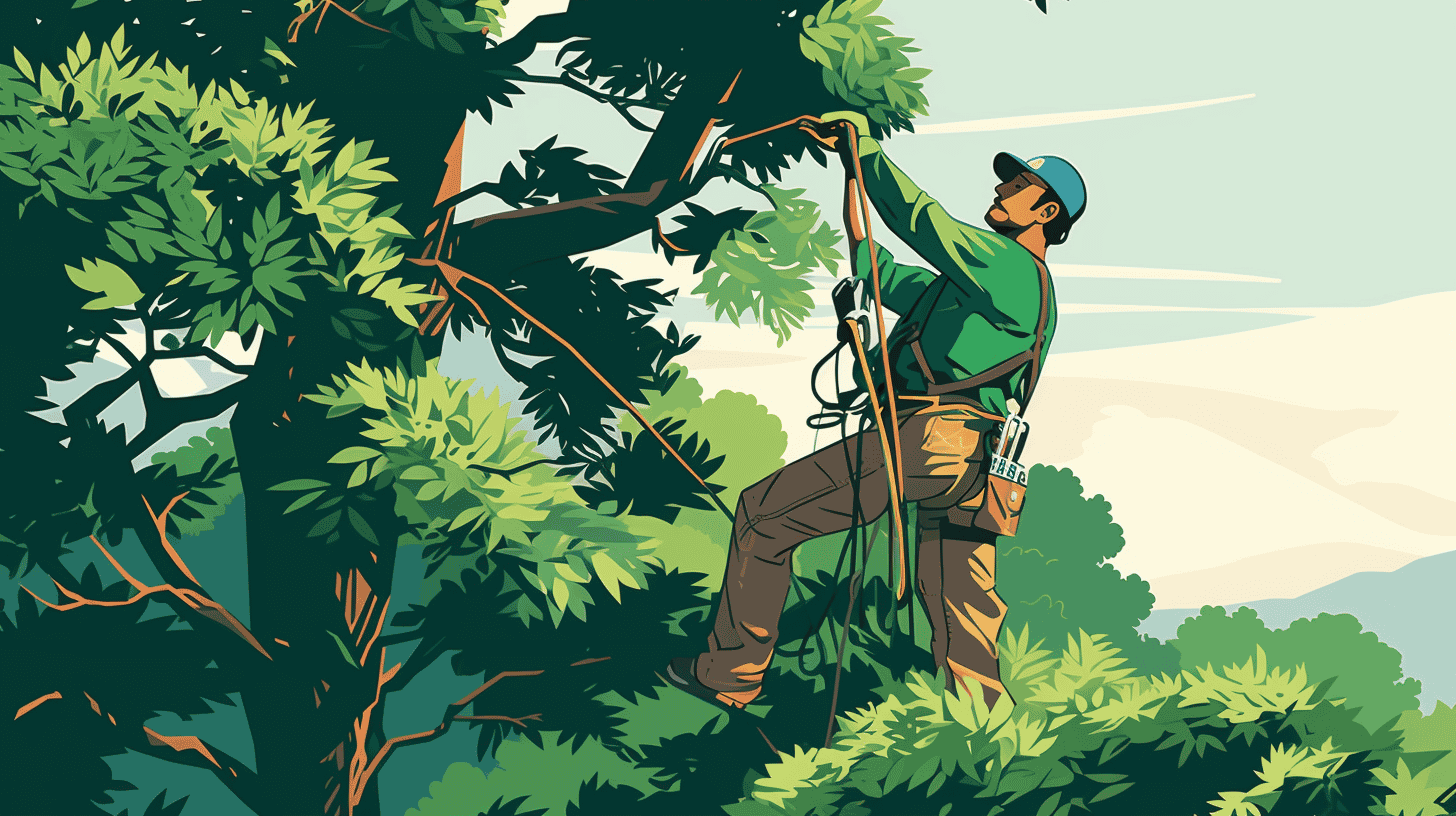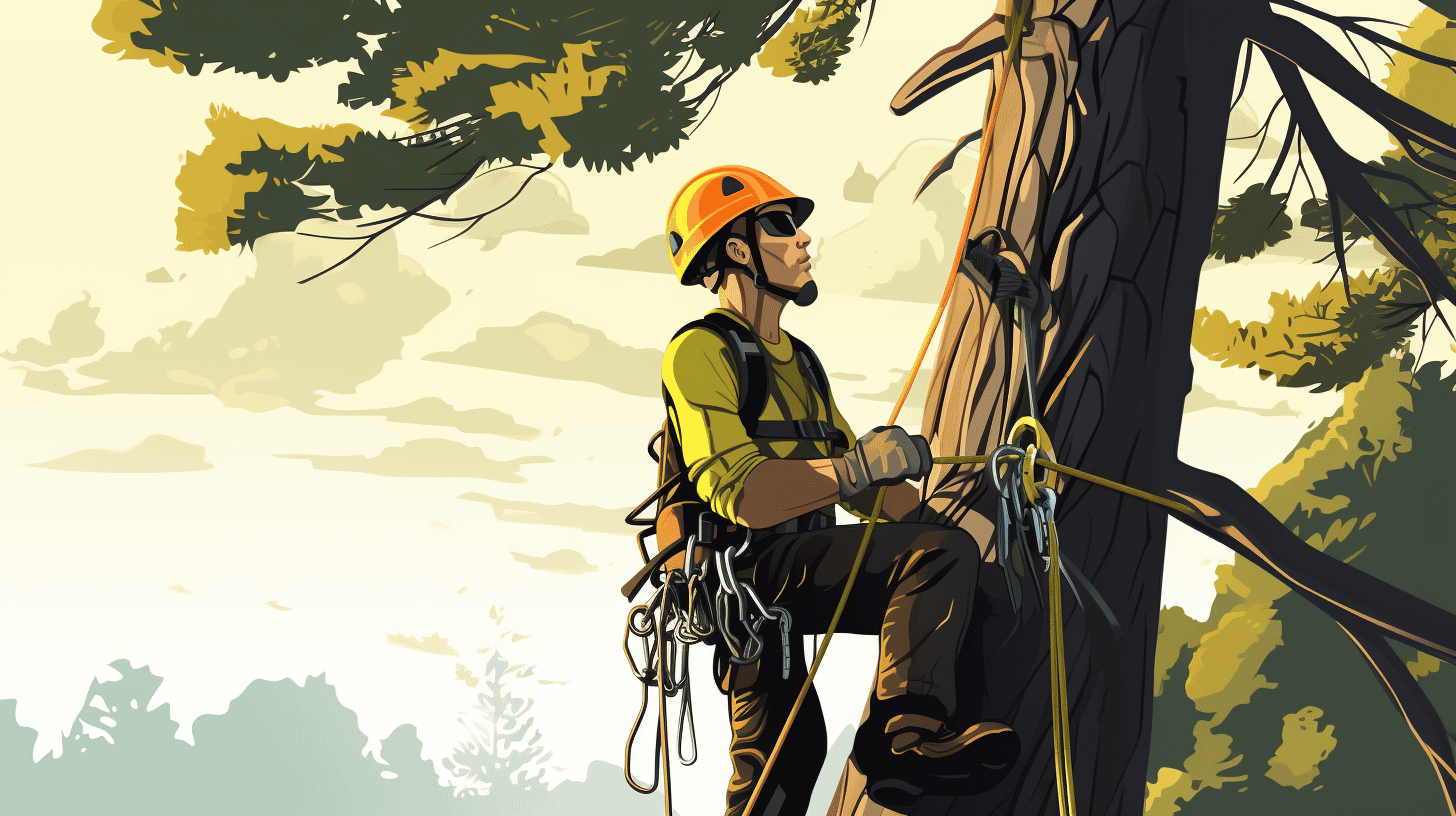Welcome to a world where the call of the outdoors is a daily part of life, where towering trees are treated as both colleagues and companions, adding an unexplained charm to everyday experiences. In this world, nature is not a place you visit; it's a lifestyle to embrace. Welcome to the life of an arborist. Known as professional tree surgeons, arborists work intertwined with nature, assuming an extraordinary responsibility towards our very lifeline—trees.
In this exciting journey, we will traverse the little-known world of arborists—their interactions with the great outdoors, the profound effect the natural world has on their health and psychological wellbeing, as well as the benefits these outdoor activities offer in fostering team building and aiding childhood development.
Without an effort in haste, let's slowly unwrap the life of arborists, exploring how the outdoors and their profession come together to form a fragrant bouquet of experiences and adventures. Whether you're drawn by the allure of outdoor activities, are passionate about trees, or just interested in knowing the arborist's way of life, you're in for a treat with this uniquely insightful read. Buckle up, nature enthusiast—the journey begins herein.
Understanding the Arborist Profession and Outdoor Activities
Are you fascinated by trees and the men and women who dedicate themselves to their care? There is more to Arboriculture than the tranquil image of a high-climbing Arborist that you might conjure up in your mind. Being an Arborist is not just about the love of trees; it's a dynamic profession that involves a plethora of other exciting outdoor activities. We're about to delve into some of these activities, namely tree felling, climbing, and working with chainsaws, to give you a glimpse into the adventurous world of an Arborist.
Tree Felling
Let's start off with the process of tree felling. The thought of felling a tree might bring feelings of ambivalence, especially for tree-lovers. Yet, it's sometimes a necessary part of an Arborist's job. This process can be demanding and exhilarating, requiring both physical strength and strategic thought. The Arborist must accurately determine the tree's falling direction, taking into consideration aspects such as the natural lean of the tree, the wind direction, and surrounding structures.
- The Notch: The Arborist starts by cutting a notch on the side of the tree facing the direction it is expected to fall.
- The Back Cut: Then comes the back cut, made on the opposite side of the tree. This cut determines when the tree will start to fall.
- Escape Plan: Last but not least, an Arborist must always have an escape plan—two possible routes to move to a safe distance when the tree starts to fall.
Climbing
Next, imagine the thrill of heights coupled with the admiration of nature's beauty—an essential part of an Arborist's climbing activities.
Scaling towering trees provides a unique vantage point not experienced by many. This isn't merely an exercise, it’s a method utilized to inspect trees for disease, pest infestation, or structural problems. Ropes, harnesses, and other safety equipment are put to good use, ensuring the Arborist can work efficiently and safely.
Working with Chainsaws
Lastly, let's talk about chainsaws. Whether an Arborist is felling a tree or pruning branches, chainsaws are a vital tool in their arsenal. This isn’t as simple as it sounds; wielding a chainsaw requires knowledge, skill, precision, and safety measures.
"Income may come and go, trees may grow and fall, but one thing must remain constant—an Arborist’s regard for safety."
So, as fascinating as this profession might seem, it's pertinent to remember that an Arborist holds a significant responsibility. Through tree felling, climbing, or working with chainsaws, they play an essential role in preserving the beauty and health of our green companions. Their adventurous activities, underpinned by an enduring respect for safety, make the world of Arboriculture a truly thrilling sphere.
Health and Psychological Benefits of Being Outdoors
In a world largely governed by screens and artificial scenery, it’s easy to overlook the incredible health and psychological benefits of being outdoors. The allure of the natural world is not limited to stunning visuals or calming sounds alone. Green spaces influence our mental wellbeing, physical health, and overall quality of life in profound ways.
Reduced Negative Emotions and Fatigue
Spending time outdoors serves as a true emotional detox. It is well-known for its potential to reduce negative emotions such as fear, anger, and stress. Not to mention, natural environments encourage a state of tranquility, significantly decreasing mental fatigue and burnout. For people living in high-stress environments, the role of nature as a natural emotional stabilizer cannot be understated.
Increased Energy and Life Expectancy
Physical activities, particularly outdoors, keep our bodies active and our hearts healthy. Whether it’s a brisk walk in the park or a rigorous mountaineering expedition, breaking a sweat outdoors promotes cardiovascular health. It turns out, the added vitamin D acquired from the sun boosts our energy levels and contributes to a potentially higher life expectancy.
Improved Sleep and Self-Esteem
The influence of nature on our sleep cycle and self-esteem is also remarkably substantial. Individuals who spend time outdoors report better quality sleep, largely attributed to the relaxing and restorative power of nature. Additionally, participating in outdoor activities such as gardening or hiking tends to boost self-esteem. After all, accomplishing new challenges in the fresh air and sunshine can leave us feeling satisfied and self-assured.
Stress Reduction, Mood Improvement, and Cognitive Boost
As you may have gathered by now, stepping outside is an easy and efficient way to combat stress. However, the soothing effect of the great outdoors goes beyond stress management. Nature is often associated with improved mood and increased happiness. Plus, outdoor enthusiasts frequently demonstrate quicker memory recall and heightened creativity, pointing to a cognitive boost instilled by nature.
Natural Antidepressant and Provider of Mental Clarity
Bringing us full circle, the great outdoors acts as a natural antidepressant. Dispensing mental clarity and inducing feelings of calm, green spaces can substantially lower the risk of depression. Regular outdoor physical activity aids in maintaining a balanced mental state, with nature serving as a gentle, rejuvenating antidote to today's fast-paced, stressful life.
Let's not forget, the outdoors is a fantastic playground that aids in developing vital life skills such as problem-solving and teamwork. With all these "green benefits" at our disposal, the outdoors manifests as a serene sanctum, teaching us that health indeed is wealth. And by prioritizing time in nature, we're investing not only in our physical wellness but our mental wellbeing too, fostering a holistic lifestyle that truly breathes in harmony with our environment.
Contribution of Trees to Outdoor Activities
Just imagine settling down for a peaceful picnic shaded from the hot sun, conversing amidst the rustle of leaves, and breathing in the crisp, fresh air. Sounds like the perfect day, right? Undoubtedly, trees play an immeasurable role in enhancing our outdoor experiences. They provide a wide array of benefits, foremost of which are providing shade, contributing to healthier environments, and promoting urban greening, which encourages physical activity. Let's delve into these benefits and truly understand the crucial role trees play in our daily lives.
Providing Shade
Trees are nature's own umbrellas. Present in parks, along streets, and around recreational areas, they protect us from harsh weather, particularly the sun's unforgiving heat. Having a picnic under the scorching sun sounds unbearable, doesn't it? And that's where trees spread their branches out — to offer a cool, shaded refuge.
- Without trees, we wouldn't have canopied trails, causing a decrease in hiking enthusiasts
- Several outdoor sports wouldn't be as enjoyable without the intermittent shade trees provide
- From reading a book to enjoying open-air concerts, a myriad of outdoor activities are made pleasurable thanks to the shade from trees
Contributing to a Healthier Environment
Moving onto a less apparent but crucial role - environmental sustainability. Trees act as the planet's lungs by absorbing harmful pollutants and emissions while releasing oxygen. A healthier environment implies healthier inhabitants, doesn't it?
- Breathing in cleaner air contributes significantly to our overall well-being, fueling our enthusiasm for outdoor activities
- Furthermore, trees act as noise barriers, reducing unwanted disturbances during our beloved outdoor escapes
- Plus, many trees play host to delightful wildlife, adding to the charm of nature-centered activities
Promoting Urban Greening and Physical Activity
Urban greening, which involves the planting of trees, and the creation of parks and green spaces in urban areas, does more than just beautify a city. It provides pedestrian-friendly zones that encourage physical activity like walking, cycling, or simply spending time outdoors.
- Urban greening offsets the 'concrete jungle' effect by creating greener, cleaner cities
- Green spaces encourage people to engage in physical activities, thereby promoting healthier lifestyles
- They also serve as social hubs, fostering community relationships while encouraging outdoor play and interaction
Indeed, the contribution of trees to outdoor activities is priceless. They not only provide tangible benefits, like shade and greener environments, but also promote a healthier lifestyle by nudging us to step outdoors and be active. So the next time you enjoy a leisurely stroll in the park or an energetic game of football shielded from the sun's heat, remember to give a silent 'thank you' to the magnificent trees around you.
The Impact of Outdoor Activities on Team Building
Imagine igniting friendly rivalry in a fun-filled soccer match or sharing laughter and stories around a cheerful campfire, all in the serene embrace of the great outdoors. These aren't just instances of recreational fun; they're pivotal experiences that can forge stronger bonds and transform your team from a group of individuals to a unified force. Unplugging from a mundane office setting and venturing into nature's playground can be a catalyst for effective team building. Let's delve into how outdoor activities foster bonding and create shared experiences, reinforcing the team-building process.
Fostering Bonding
Undeniably, outdoor activities are instrumental in fostering bonding between team members. Embracing the elements provides a unique platform to break down barriers and encourage inclusivity. So, how do outdoor activities do this, you ask?
- Removes hierarchical barriers: Outdoor settings blur the formal lines of the corporate world. When battling wavering canoes or scrambling up rocky terrains, the distinction between the CEO and the intern becomes inconsequential. This aids in fostering an environment of equal participation.
- Encourages communication: Be it planning the route for a trail hike or devising tactics for a team sport, outdoor activities naturally encourage communication. This paves the way for better understanding and improved relationships among team members.
- Fosters trust and cooperation: Trust forms the cornerstone of any successful team. Outdoor activities often require cooperation, be it tandem kayaking, or sorting out a tent in the wilderness. This shared reliance promotes trust, and with trust comes bonding.
"Now, wouldn't you agree that these nuggets of interaction and experience in an outdoor setting go a long way in fostering a strong team spirit?"
Creating Shared Experiences
In any team, shared experiences are the glue that binds individuals together. They help in building a collective identity, establishing mutual trust, and creating a sense of camaraderie. When a team shares outdoor experiences:
- Mnemonic bonds are created: Outdoor activities offer unique memories that become ingrained in the team psyche. These mnemonic bonds can be a source of laughter, inspiration, and goodwill long after the event, enhancing the feeling of togetherness.
- Trust and empathy are established: Overcoming challenges together in an outdoor setting builds a mutual understanding and empathy among team members. This helps in establishing trust, a vital component of any successful team dynamic.
- Common stories are crafted: Shared experiences create a pool of common stories and anecdotes. These stories become part of the team's legacy and provide a sense of identity and belonging.
In essence, the great outdoors can be your finest team-building tool. It fosters bonding, creates shared experiences, and encourages a unified workforce. It's fascinating how nature can nurture not just our bodies and souls, but our professional relationships too. The next time you plan a team-building activity, do consider stepping outside!
Outdoor Activities and Childhood Development
Outdoor Learning Experiences
As we dive deep into the fascinating world of children's development, it's easy to see the tremendous value of outdoor activities. While modern age technology and video games have their place, the lure of fresh air and sunshine is undeniable. But outdoor activities offer more than just a dose of Vitamin D. They provide unique learning experiences that can significantly contribute to a child's overall growth and development.
One of the significant benefits of outdoor play is the opportunity for unstructured learning experiences. Often overlooked, this sort of experience offers an organic, child-led form of exploration. The child is the master of their environment, actively exploring and interactively learning about the world around them.
These experiences intertwine with all spheres of the child's development including:
- Physical Development: Climbing trees, running, or even simple activities like jumping and throwing offer a chance for children to hone their gross motor skills. The unpredictability of the outdoor environment also enhances their balance and coordination.
- Social Development: Outdoor play encourages interaction, cooperation, and negotiation with peers. It furthers their understanding of social rules and guidelines, promoting strong social skills.
- Cognitive Development: The natural environment provides endless stimuli, fostering curiosity, creativity and critical thinking capabilities. Being in the outside world exercises their problem-solving skills as they navigate new experiences and face challenges.
"Outdoor learning experiences help children develop vital life skills."
Exploring and Adventuring in Natural Environment
Let's venture further and discover the impact of nature on children's development. The great outdoors captivate the child's imagination and offer an expansive playground for creative thinking and adventurous exploration.
By interacting with nature, children garner an appreciation for life and the environment, instilling in them fundamental values for conservation. Adventuring in outdoor environments also equips kids with survival skills and resilience, understanding the consequences of actions and taking calculated risks.
Whether it be observing a bird building its nest, digging for worms, or plants’ examination, each minute in nature becomes an opportunity for meaningful, practical learning.
Combine the lessons learned from these experiences with those home and school environments and we create a complete, well-rounded development platform for the child.
After all, "Outdoor play allows children to explore, learn, and have adventures in a natural environment". It is clear that the significance of outdoor activities in children's development should not be underestimated. As adults, parents, and educators, it is our responsibility to facilitate these experiences, providing an environment where children can not only play freely but learn and grow efficiently.
Conclusion
In conclusion, outdoor activities play a significant role in the life of an arborist and in society as a whole. As we've explored, they contribute to physical health, mental well-being, team-building and childhood development, all while contributing to eco-friendliness and a healthier environment.
In a world increasingly reliant on technology, it's even more important for us to cultivate an appreciation and understanding of the natural world. This journey begins with outdoor experiences in childhood and continues throughout our lifetime. Arborists embody this connection with nature in their professional echelon - they embrace the outdoors.
However, every outdoor journey calls for safety measures. Reliable work gear, like that from Rain Gear Pro, particularly engineered in Canada, provides the safety net that outdoor enthusiasts like arborists need. Rain Gear Pro's chainsaw safety pants, for instance, seamlessly blend protection and comfort, serving as the first line of defense for arborists in outdoor settings.
When we celebrate the outdoors, remember the trees that facilitate our physical activities, the skills we learn, and the bonds we create through these interactions with nature. And while we're ensuring our safety with reliable gear like that from Rain Gear Pro, let’s remember to respect the environment that graciously hosts our adventures. Together, we can ensure a treasured and productive relationship with the great outdoors, for us and generations to come.
Frequently Asked Questions
-
What are some outdoor activities that arborists engage in?
Arborists engage in a variety of outdoor activities such as tree climbing, tree pruning, tree planting, tree removal, tree risk assessment, and tree health diagnostics.
-
How do outdoor activities benefit arborists?
Outdoor activities are essential for arborists as they provide hands-on experience and practical knowledge in dealing with trees. These activities help arborists develop their skills in tree maintenance, risk assessment, and understanding tree biology.
-
Do arborists need to be physically fit for outdoor activities?
Yes, physical fitness is crucial for arborists as outdoor activities often involve climbing trees, carrying heavy equipment, and working in challenging environments. Being physically fit ensures that arborists can perform their tasks safely and efficiently.
-
Are outdoor activities necessary for arborists to excel in their profession?
Yes, outdoor activities are necessary for arborists to excel in their profession. By actively engaging in outdoor activities, arborists gain practical skills and firsthand experience, which are indispensable for understanding tree health, practicing proper techniques, and providing effective tree care.
-
How can outdoor activities contribute to the professional development of arborists?
Outdoor activities contribute significantly to the professional development of arborists as they provide opportunities to learn about different tree species, understand local ecosystems, and enhance problem-solving skills. They also help arborists stay up-to-date with the latest industry trends and techniques.


















Leave a comment
This site is protected by hCaptcha and the hCaptcha Privacy Policy and Terms of Service apply.